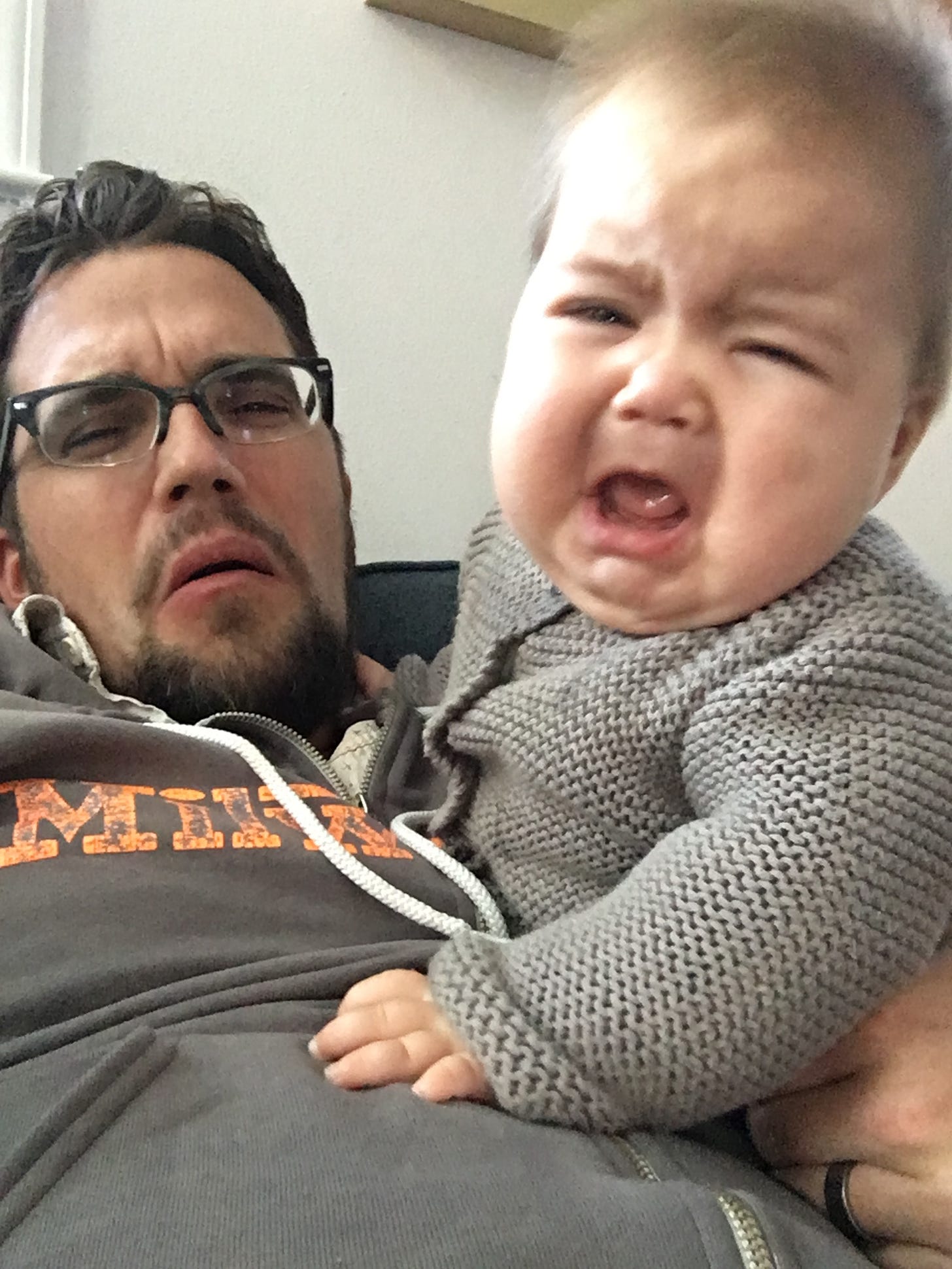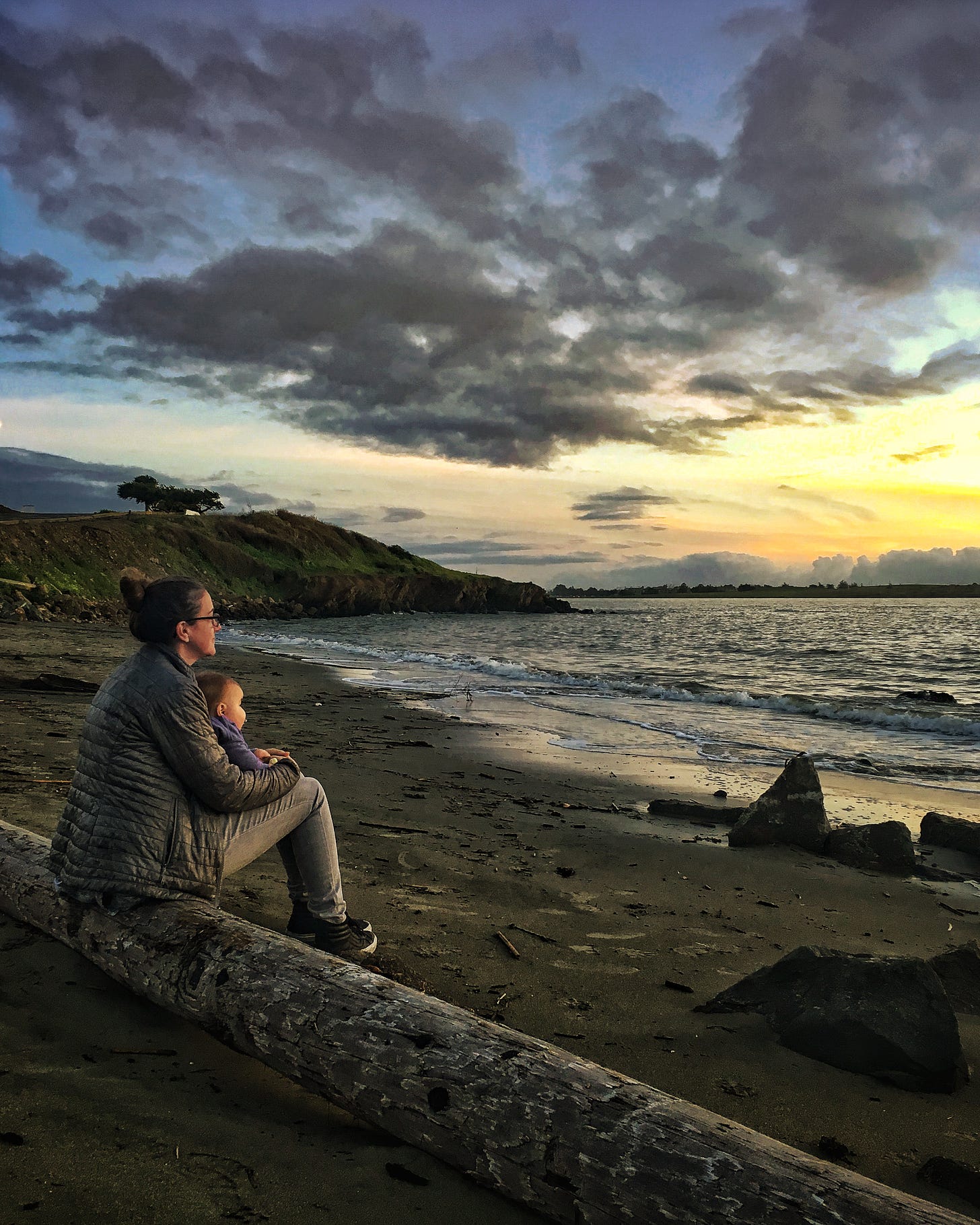SPECIAL OPPORTUNITY: Join us for an Examined Family online book club meeting on Needy by Mara Glatzel on June 30th at 9am PST / 12pm EST! RSVP here. Buy the book here. Mara will join us! We can’t wait to hear your thoughts, questions, and experiments with reclaiming your sovereignty. (We’ll probably cap it around 100 people, so get your spot before they run out.)
Examined Family is written by a woman really trying to outgrow some old stories and write some new ones at this very moment. If you subscribe already, you probably guessed that. And thank you! If you don’t, now’s a great time.
Have you ever noticed how when a little kid gets a bump or a scrape, sometimes they explore the story of it after the actual pain is over? In our house, when we unintentionally hurt someone else our practice is to apologize and then ask, Is there anything I can do to help you feel better? Sometimes the person dusts themselves off and gets the hell on with the day. Sometimes she requests the Spiderman ice pack or a unicorn band-aid. Sometimes she needs a hug or a kiss or a snuggle. Sometimes she needs to make a miserable facial expression for awhile to keep the focus in the room squarely on her enduring story of suffering.
I’ve been thinking about this phenomena—how we explore the story of the pain long after the acute hurt is over—in adult lives. The grown-up version seems to center on emotional pain and last much longer. It involves crafting and coddifying and bucking against reality. It sometimes helps us move towards a kind of liberation born of truth-telling about who we really are and what we really go through. And this, of course, is sacred.
But sometimes, like the miserable facial expression and blaming stare of a 5-year-old whose big sister has knocked her down, it becomes something else. It becomes its own narrative trap. We thrash around inside of it. We wish it didn’t exist, even as we reinforce it with more and more of our own rumination and outrage. We become the story and the story becomes us and, as is the way with self-fulfilling prophesies, it makes it very hard to bust out. It makes it hard to look up. It makes it hard to realize that the initial pain has faded, or that it’s still there, but we have an evolving relationship with it.
Why do we do this? I believe that part of why we get trapped in our own stories is that they get us the attention we crave. Or so we think. As with the little kid with the put-on pout, we revisit our stories in therapy and in friendships, with our longterm partners, maybe our parents, and—if they are loving and patient and kind—they make us feel heard and like we are entitled to our suffering.
We forget that we are also entitled to acceptance. We are entitled to evolution. We are entitled to true healing, which often means escaping the initial story and writing a fresh one that is less about our pain and more about the full spectrum of experience (you notice I didn’t say heroism…another trap of a story).
Another reason we often get trapped in a story is that we never let the pain move through our bodies. We intellectualize instead of having a big, messy, cathartic cry. (Kids beat us every time on this one.) Or we stiffen up rather than shaking it off. (Again, kids are much better at this, as are animals.) If our “bodies keep the score,” as Bessel Van Der Kolk says, I think our minds keep the playbook—a way of doing the same narrative moves in the same emotional ways over and over again, and since practice is perfect, our pain becomes perfected rather than released or let go or transformed.
So what is the alternative?
My friend, author, and somatic practitioner Molly Caro May recommends “a vibrant combination and natural overlap—top-down story + bottom up somatics. We can’t take story out of humans, nor should we. But we can learn to work with story so it helps us.”
In other words, we can’t fall asleep at the wheel of our own stories. We have to feel our bodies inside of them. We have to navigate to new landscapes.
For me, there is also something here about time and flexibility. A story serves us for only so long. When we first realize that we’ve been in pain and name and describe its source, it can profoundly clarifying and stabilizing. Explanation is a kind of healing, for sure. But in time we can become less grounded by our story and more stuck in its mud—unable to see new horizons.
And each story only serves us in one way. We need many stories to understand who we are, where we come from, where we are going. We need fluidity and flexibility in those stories. Can you pan out to a detail you’ve never paid enough attention to? Yes, maybe your mom was critical and made love feel conditional, but where was your dad? What did his silence do to you? Yes, you didn’t get the easiest kid to parent, but how is that teaching you to ask for help in a way you never might have otherwise? What does the hard parts of your kid teach you about your own lack of self-acceptance?
I’m not advocating that you transfer blame or look for silver linings, but give yourself the gift of a wide varieties of dynamics and interpretations. In the breadth is potential for healing and moving and wondering. Jenny Odell writes, “Simply as a gap in the known, doubt can be the emergency exist that leads somewhere else.”
Where else? Who knows? That’s the beauty of pain and the stories we wrap around it and then outgrow. Even as grown-ups, we need the proverbial kiss on the boo boo that is being truly heard by someone who loves us (including, hopefully, ourselves), and then we get to jump back into the fray of living, the rowdy game of flashlight tag in the dark that is being a human alive in this tender, terrible moment.
What stories are you feeling ready to evolve? What stories are you newly trying to write? What stories did you inherit that you have realized need revision?






What a profound and timely piece in my own journey towards healing! As a fiction writer I love thinking up alternate endings and your essay reminds me how we can change the stories we tell ourselves. I recently worked with a somatic healer and we did a “tapping” session. My homework was to stand barefoot near a tree I’m drawn to.. it sounds absolutely crazy but what’s crazy is how I was wired to ignore my body for most of my upbringing and being in touch with the earth and my feelings has led to breakthroughs. The story I wrote for myself got rewritten simply because I was open to trying a modality I had never tried before with a focused intention. Thank you.
I think time is key here. There’s a freshly-traumatized vantage point that, as you say, isn’t terribly expansive but is essential for sense-making. And then there’s what Cheryl Strayed calls “the bigger, truer story.” I think that it is definitely freeing to invite ourselves to reconsider old stories from what my friend Ashley (an NPR reporter) and I talked about as “the middle distance.” Still clear and visceral, but with wisdom and structure. As in, not the kind we tend to value in 24/7 journalism but the kind we do tend to get in memoir.
https://ryanroseweaver.substack.com/p/exit-interviews-reporter-ashley-locke
That said, everyone’s version of and timeline for the middle distance, I find, is different. Research on differences in sensory processing depth seems to bear that out. Some of us cognitively need to work longer on a certain draft of our stories before we’re finished, or open to revisions. It’s not a character flaw as much as a trait. And there are upsides to it. As my students might say, one person might see us as “dragging it” while we might just be trying to get our arms around it, still, so we can carry it.